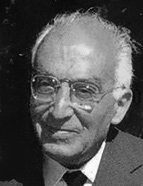

Having summarised the main milestones of SDA ’ s academic career, we will now outline an appreciation of his intellectual career by analysing his work. The first fruits of the pen of the young man from Penel a sprouted in the field of literature. He began his literary activity at the very young age of 14, publishing texts in Semanário Infantil [Children’s weekly] , a children ’ s weekly newspaper published in Lisbon.
Throughout his life, people and landscapes would provoke different emotions, which he expressed in prose and poetry. He discovered and reinvented the symbolic places of Coimbra, influenced by texts written by the author of Só – Penedo da Meditação [Alone- The Cliff of Meditation ] (1936), António Nobre e a paisagem de Coimbra [Antonio Nobre and the landscape of Coimbra] , 1940) – and by socialising with Eugénio de Castro, whose house he used to visit and where he would meet his future wife. The titles of his various writings reveal his diverse literary tastes – lavadeira: esboço um pouco à Dostoiewsky [Laundress: a Dostoiewsky-esque sketch] (1936), Eça de Queiroz … falsificador? [Eça de Queiroz… forger?] and Gil Vicente e o mar [Gil Vicente and the sea] (1942), Penela na obra de dois escritores: Fernão Lopes e Eloy de Sá Sotto Maior [Penela in the work of two writers: Fernão lopes and Eloy de Sá Sotto Maior] (1966).
Romantic looks to soften times of contact with hard lives. In his grandfather ’ s and father ’ s pharmacy, he witnessed human suffering from an early age, acquiring a keen sense of compassion for his fellow human beings, whose ailments he would try to alleviate throughout his life. Early on, he identified the cause of some of his fellow countrymen ’ s suffering: the inadequate living conditions resulting from the economic lethargy of his homeland, expressed, for example, in the ruins of the Germanelo Castle and the state of disrepair of the Penela Castle. With the aim of waking up the powers of the time to the preservation of such heritage with a view to the future, he raised his nonconformist voice in texts expressively entitled Penela: restaure-se o seu castelo [Penela: restoring its castle] (1931) and Penela: uma linda vila quasi ignorada [Penela: a beautiful village almost ignored] (1933).
This work is financed by national funds through FCT - Foundation for Science and Technology, I.P, in the scope of the projects UIDB/04311/2020 and UIDP/04311/2020.
